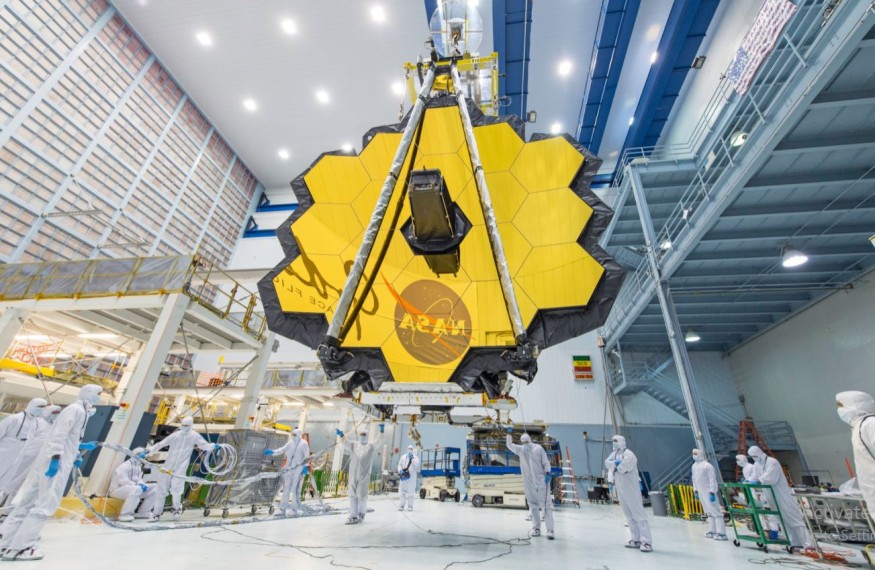NASA and an international team of scientists will launch a brand-new telescope into space soon, ushering in a new era of cosmic exploration. The US space agency has developed a 100 times more powerful device, capable of seeing stars so far away that their light has traveled for roughly 14 billion years since the Big Bang.
The James Webb Space Telescope, named for former NASA administrator James Webb, will be launched on December 22 atop an Ariane 5 rocket from Europe's Spaceport in French Guiana. It promises to address significant gaps in our understanding of the history of our Universe by peering billions of years back in time.
The telescope is an international partnership between NASA, the European Space Agency (ESA), and the Canadian Space Agency (CSA). They conceived the plan more than thirty years ago and it costs $9.7 billion. Aside from the Ariane 5 launcher, Europe has donated 1.5 of the four scientific instruments.
According to CBS News, the James Webb Space Telescope is NASA's most ambitious and complicated space observatory. The sun shield on this revolutionary new optical equipment will be the size of a tennis court. It will observe galaxies that originated more than 13.5 billion years ago.

James Webb Space Telescope To Do Things Hubble Space Telescope Could Not Do
According to the Washington Post, the Webb telescope was constructed precisely to perform things Hubble couldn't. JWST will also include a slew of exciting newcomers. The capacity to detect small levels of infrared light is the most crucial aspect. It is significant because it will allow scientists to see farther than ever before through the dust and debris of outer space.
The Webb telescope will also benefit from its distance from Earth of around 1 million miles, which is substantially farther than the moon (almost 240,000 miles) and far farther than the Hubble telescope (just 340 miles away). Thanks to this distance and a sophisticated, protective sunscreen, the new equipment will avoid a lot of the blinding light and heat emitted or reflected by the Earth, the sun, and the moon. It's similar to how seeing stars in the woods is more accessible than seeing them in a metropolis.
Scientists will use the telescope to answer questions like what happened in the early years after the cosmos was born after it reached its orbit and unfolds like origami. It will also discover new exoplanets and look for water and other life-sustaining elements among the stars.
Checking Out Exoplanets
France24 said that JWST will also examine exoplanets (planets orbiting distant stars beyond our solar system). While previous missions have discovered hundreds of such planets, JWST will go a step further by photographing some of them directly and doing spectroscopy on their atmospheres.
MIRI (for Mid-Infrared Instrument) is one of the major instruments that will enable these observations. It was built in collaboration between ESA, a consortium of European institutes, and NASA. MIRI is made up of a camera, two spectrometers, and stellar coronagraphs. The LESIA lab at the Observatoire de Paris produced coronagraphs that substantially limit the flux of brilliant objects compared to neighboring dim ones. Exoplanets around brilliant stars and the active centers of galaxies will be visible as a result.
JWST will also peek into our own Milky Way galaxy, boosting our understanding of how newborn stars are born and how planets develop around those stars, in addition to solving the enigma of how galaxies in the early Universe were formed and photographing exoplanets.
RELATED ARTICLE : NASA James Webb Space Telescope is Finally Back on Track in Preparation For December Launch
Check out more news and information on Space in Science Times.
© 2026 ScienceTimes.com All rights reserved. Do not reproduce without permission. The window to the world of Science Times.










